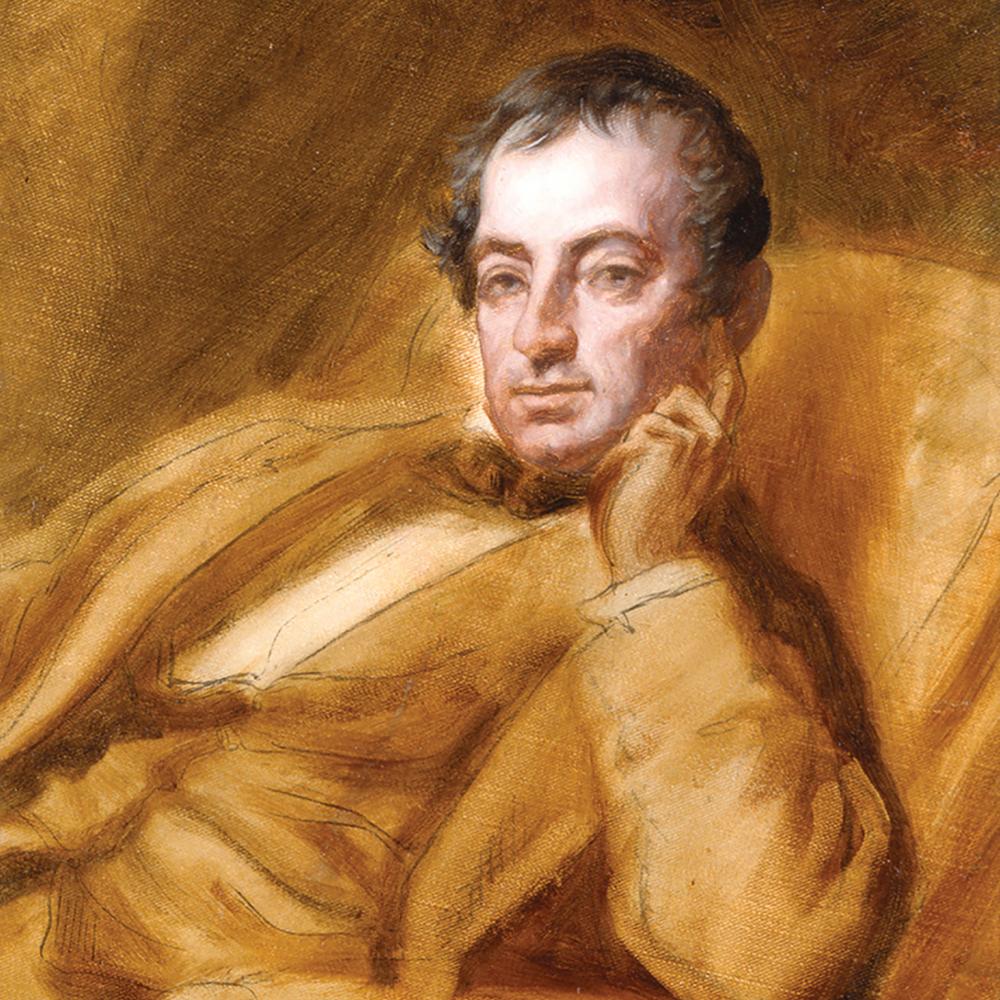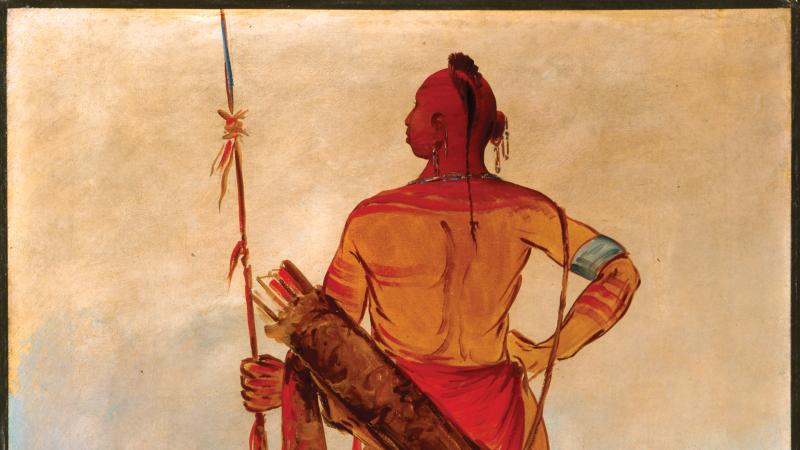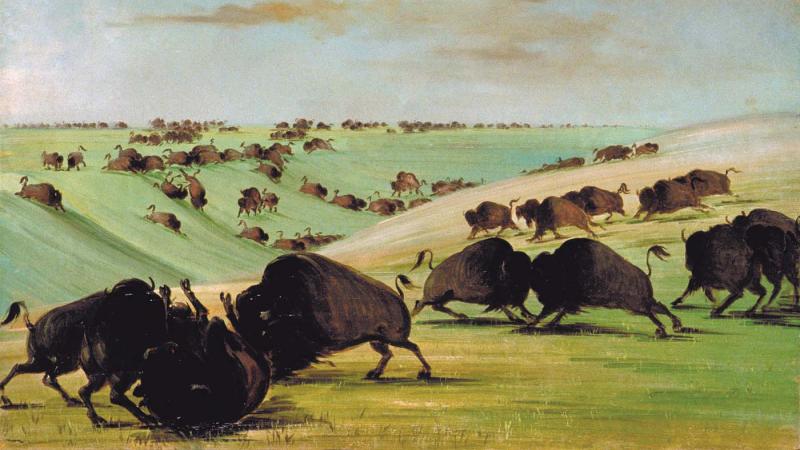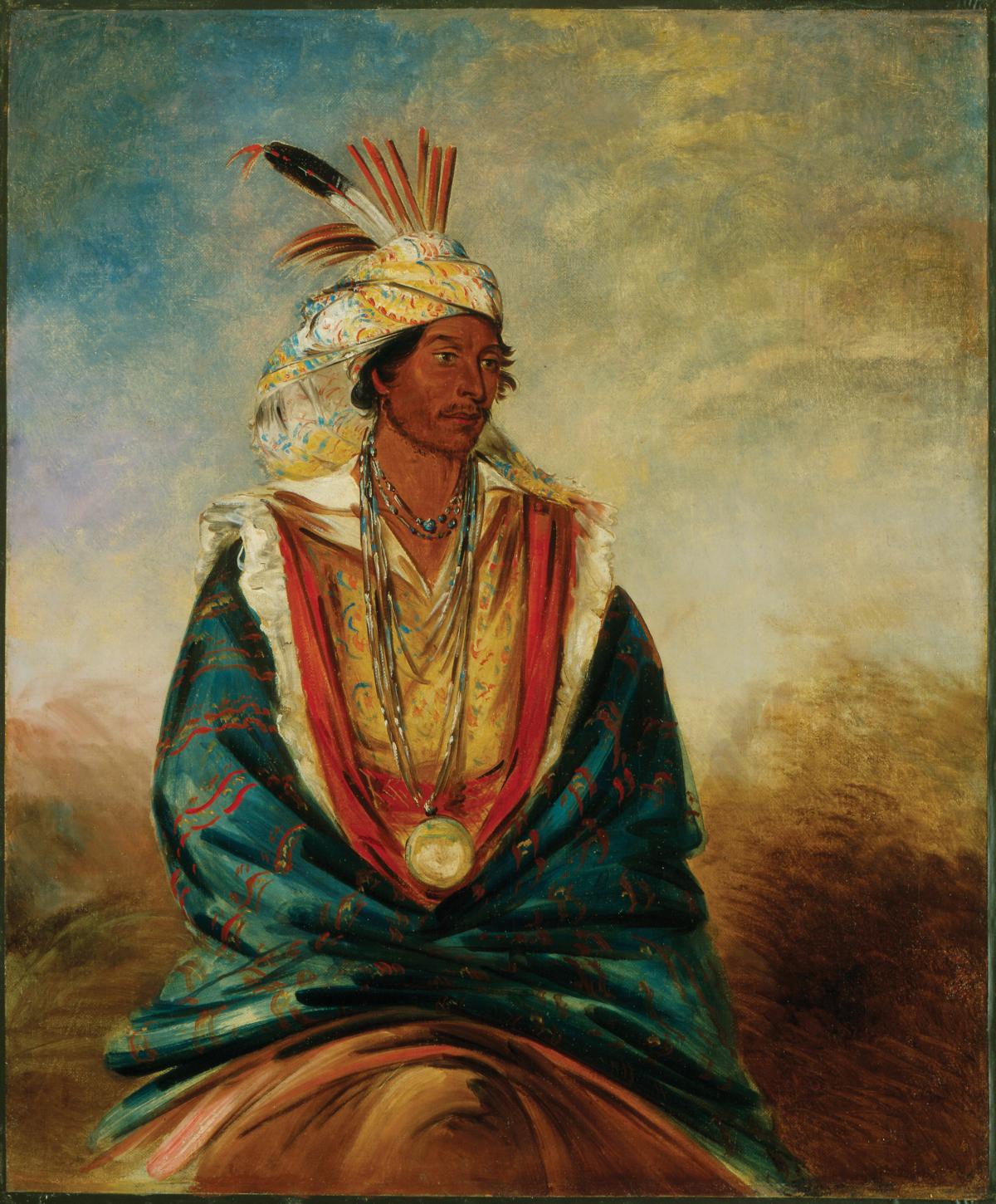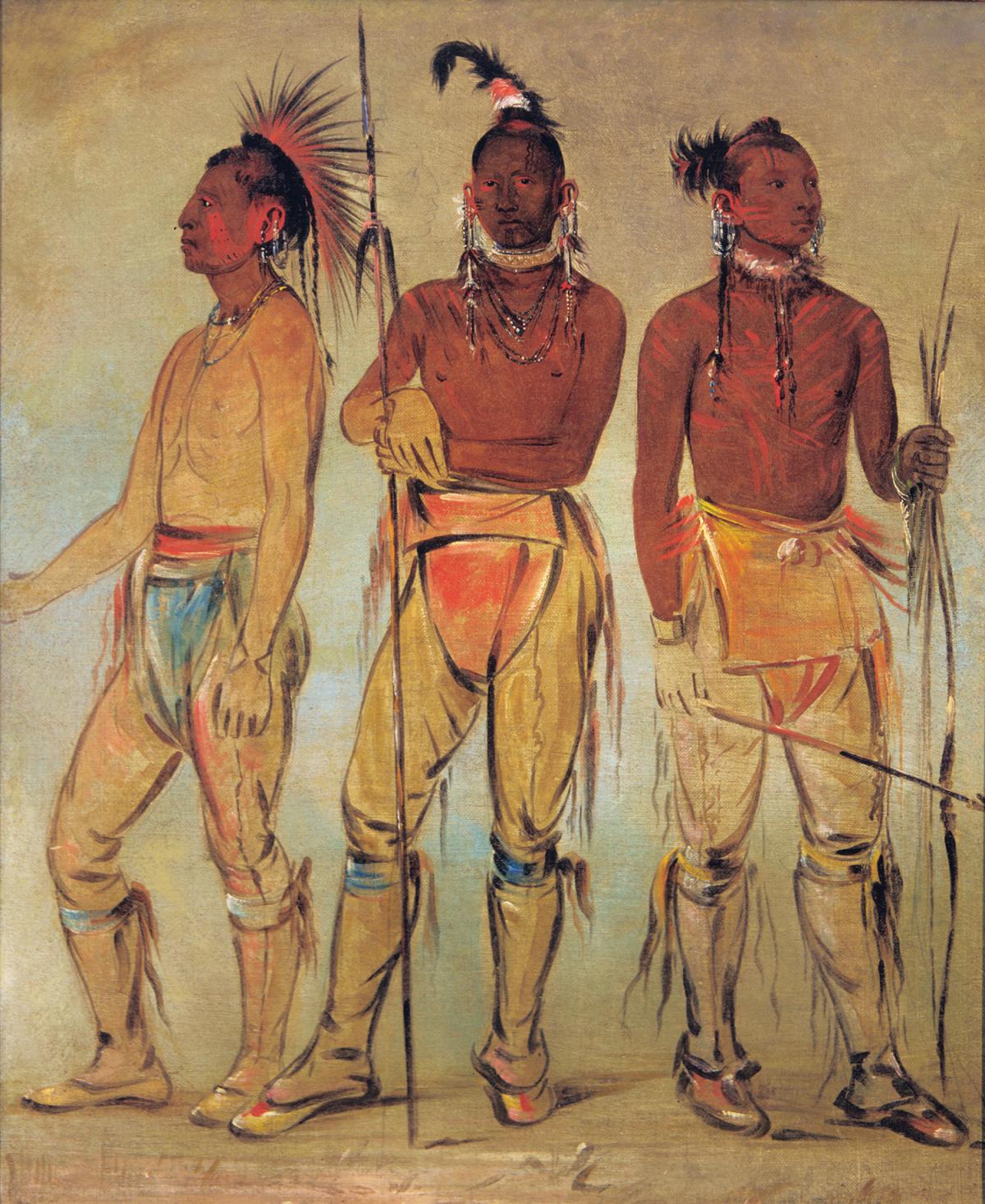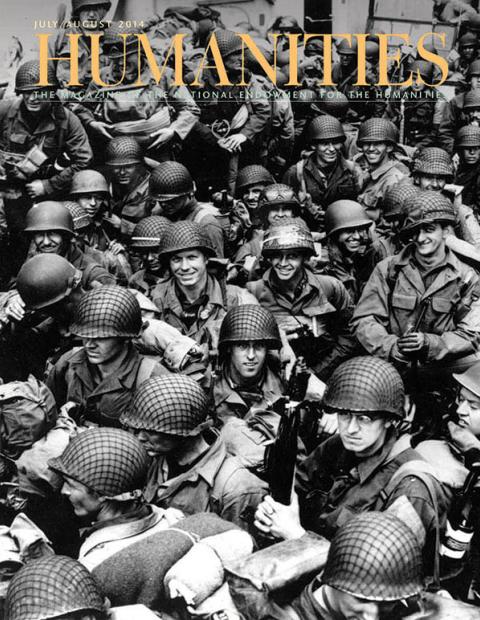As he entered New York City on May 21, 1832, Washington Irving, the acclaimed author of “Rip Van Winkle,” was having a Rip Van Winkle moment of his own. Irving had charmed thousands of readers with the story of Rip, a henpecked husband who falls asleep for twenty years, then awakens to a much different community from the one he remembered.
Now, it was Irving’s turn to be surprised. After seventeen years abroad, helping to manage a family import business, working as a diplomat, and honing his literary career, Irving had returned to his hometown.
But the New York of 1832 was not the same as the New York he’d left in 1815. Out near the edge of the city—or the place where he once marked the city’s end—buildings now stood instead of woodland. In other ways large and small, Irving’s old haunts had evolved. “I passed through places that ought to be familiar to me, but all were changed,” he later recalled. “Huge edifices and lofty piles had sprung up in the place of lowly tenements; the old landmarks of the city were gone; the very streets were altered.”
What had not changed, as Irving quickly discovered, was New York’s affection for one of its famous native sons.
When Irving’s return ship, the Havre, stalled outside New York Harbor, unable to complete its passage because of a steady headwind, a local newspaper dispatched a schooner to collect Irving and bring him ashore—a clever way to get the scoop on Irving’s arrival back in the States. Invitations quickly poured in for public dinners in Irving’s honor. He had left as a famous writer in 1815, and his celebrity mushroomed during his years away. He’d kept up his literary career during his days abroad, creating a sensation on both sides of the Atlantic with the publication of The Sketch-Book of Geoffrey Crayon, Gent.
The Sketch-Book contained not only “Rip Van Winkle,” but “The Legend of Sleepy Hollow,” Irving’s iconic tale of an ungainly schoolteacher who might— or might not—be the victim of a supernatural presence in the woods.
Both “Rip” and “Sleepy Hollow” drew on Hudson Valley settings, affirming Irving’s connection with New York City and the wider region of New York State. But The Sketch-Book also contained many other pieces inspired by Irving’s time in England, prompting some critics to conclude that Irving had turned his back on America to become an Old World scribe.
The criticism stung. Irving feared that questions about his national loyalties were widespread, and he wondered how he’d be received in New York after being gone nearly two decades. He needn’t have worried. The New-York Mirror, expressing what seemed to be the consensus view around Manhattan, hailed Irving’s arrival as “almost like the coming to life of some of those departed poets and authors whose works enrich our libraries, and whose names are cherished as something sacred and apart from those of the living.”
“It was fitting that he had been brought ashore by a newsboat,” writes Irving biographer Brian Jay Jones, “for Washington Irving was all that New York could talk about.”
Despite the big thumbs-up from so many of his fellow countrymen, Irving decided that his next book should embrace a distinctly American theme. Within weeks of landing back in New York, he found his subject. The author had cleverly gotten himself invited on a small government expedition to the Western frontier. He’d take notes along the way and publish a travelog of his experiences.
Few people seemed a more unlikely candidate for a cowboy outing than Washington Irving. He was forty-nine, had a complicated health history, and was the ultimate city slicker, a sophisticate who had passed much of his adulthood in the great capitals of commerce and culture—New York, London, Paris, Madrid, Dresden. Earlier in 1832, in an adventure typical of Irving’s lifestyle, he had visited England’s Newstead Abbey, sleeping in the bed where the late poet Byron had once slumbered and dining with the Duke of Sussex, brother to the king.
How would such a man fare out on the prairie, among wolves and warring tribes? Imagine Calvin Trillin saddling up for a rodeo, and you’ll get some idea of how silly all of this seemed. By any practical measure, Irving’s Western road trip made little sense, but he had an insatiable wanderlust and a flair for improvisation. He’d cooked up his scheme for a frontier odyssey in a matter of days, with some equally dubious prospects for a Wild West excursion along for the ride.
While aboard the Havre on his voyage from France to New York, Irving had met and quickly befriended two fellow passengers—the young Swiss count Albert-Alexandre de Pourtalès, and Charles Joseph Latrobe, an Englishman who had been hired as Pourtalès’s tutor and guardian. The nineteen-year-old Pourtalès was something of a rogue, and his parents were sending him overseas so that he could indulge his wild side, presumably out of view of polite society. The three men agreed to do some traveling together once they landed in the States, though nothing nearly as ambitious as the journey that soon developed. While on board a steamboat heading from Buffalo to Detroit, Irving and his friends met Henry Leavitt Ellsworth, who had been appointed by President Andrew Jackson to help inspect the lands for resettlement of Native Americans who were being forcibly relocated to the west of the Mississippi River.
Irving, Latrobe, and Pourtalès jumped at the chance to go along with Ellsworth’s team, which was accompanied by a band of rangers for protection. They’d be gone from September through November, traveling through Missouri, then down into the largely unsettled prairies of what is now Oklahoma, then looping to Arkansas, where Irving could work his way back to New York.
Irving began the trip with no official duties. He signed on as a kind of writer-in-residence around the campfire, his role similar to the embedded reporters who, in modern times, have been placed within the ranks of American soldiers on patrol. But, early in the mission, Ellsworth tapped Irving to be his secretary—“for which,” Jones notes, “Irving received a saddle, bridle, blanket, bearskin, and India mat, but no pay.”
It was a thrilling itinerary for Irving, but he knew that the trip had been inspired by a tragic chapter of American history—the uprooting of Native American communities from their ancestral homelands. Irving viewed these tribal cultures with a sense of elegy. Writing to his brother Peter about his Western tour, Irving mentions “an opportunity of seeing the remnants of those great Indian tribes, which are now about to disappear as independent nations, or to be amalgamated under some new form of government.”
During the party’s visit to St. Louis, which was then little more than a trading post, Irving met William Clark, legendary half of the Lewis & Clark team that explored the lands of the Louisiana Purchase. Clark had recently helped settle the Black Hawk War, named after the Sauk Chief Black Hawk, who was now a prisoner at nearby Jefferson Barracks.
Irving arranged to visit Black Hawk, apparently expecting to see a mighty warrior in chains. Instead, as Irving noted in a letter to his sister, the chief “is an old man upwards of Seventy: emaciated & enfeebled by the sufferings he experienced and by a touch of cholera.”
Irving’s encounter with Black Hawk sharpened his skepticism about U.S. policy. “I find it extremely difficult, even when so near the seat of action, to get at the right story of these feuds between the White & the red man,” he told his sister, “and my sympathies go strongly with the latter.”
Irving’s journey also brought him close to another national shame, slavery. As the party traveled down the Ohio River by steamboat, Irving met a slave woman who tearfully explained to him that she had been separated from her children, who lived away from her on a nearby plantation. “Such wrenching true stories turned his stomach,” Jones writes, “yet Washington Irving . . . never risked his reputation espousing controversial political views. His opinions remained his own.”
While Irving’s sensitivity to racial injustice might have been ahead of his time, his writings were carefully crafted for commercial appeal. That meant not rocking the boat too much.
The Sketch-Book contains two essays on Native Americans, both largely sympathetic to indigenous culture. In one of those essays, “Traits of Indian Character,” Irving was fairly blunt about the challenges of inequality:
It has been the lot of the unfortunate aborigines of America, in the early periods of colonization, to be doubly wronged by the white men. They have been dispossessed of their hereditary possessions by mercenary and frequently wanton warfare; and their characters have been traduced by bigoted and interested writers. The colonist has often treated them like beasts of the forest; and the author has endeavoured to justify him in his outrages.
Pretty tough language, to be sure, but then Irving, as if falling prey to the same self-justification he’s just deplored, goes on to laud the U.S. government of his day as much more enlightened, declaring that it “has wisely and humanely exerted itself to inculcate a friendly and forbearing spirit towards (Native Americans), and to protect them from fraud and injustice.”
Andrew Burstein, another Irving biographer, does a good job of explaining Irving’s limitations on Indian policy: “He was unlikely to contest the will of Andrew Jackson, that honest ‘old Roman’ with ‘a little dash of the Greek’ whom he preferred to see as a man who wished people well.”
If Irving seemed willing to acquiesce to popular sentiment regarding Native Americans, it’s perhaps also because his own racial views were sometimes conflicted and contradictory. He writes with great admiration of the Osages he meets: “They had fine Roman countenances, and broad deep chests; and, as they generally wore their blankets wrapped round their loins, so as to leave the bust and arms bare, they looked like so many noble bronze figures.”
But throughout A Tour on the Prairies, he tends to treat people of mixed blood with a suspicion typical of the times. His running mockery of a “Jack-of-all-work” on the expedition nicknamed Tonish seems at least partly fueled by the camp hand’s status as “a half breed of French and Osage origin.”
Although Irving might not have addressed race questions to our liking, his sense that these questions were worth asking suggests his prescience about the social challenges looming in the nation’s future.
Irving was equally prophetic about the implications of development. After seeing how much New York had grown during his absence, he had little doubt that the American frontier, which many people regarded as limitless, would rapidly be changed by settlement. Writing to his brother Peter about the trip West, Irving says that he wants to “behold herds of buffaloes scouring their native prairies, before they are driven beyond the reach of a civilized tourist.”
It all seems so modern—not only Irving’s sense of a fragile ecology that most assumed was indestructible, but his casual use of the word “tourist” to describe his connection with the frontier. While others looked to the West for its farmland, its minerals, and its strategic significance, Irving intuitively understood that the region was also, perhaps first and foremost, a great spectacle.
One of the small pleasures of his journals from the trip is their unstudied urgency. Irving could be a cloyingly self-conscious writer; his early essays, modeled on those of the English journalist Joseph Addison, seem to strive a bit too eagerly for the high polish of style. But in the Western journals, Irving is much too busy trying to get it all down to worry with appearances. His entries bristle with telegraphic energy, forming vivid scenes with a handful of hastily scribbled words. Here’s part of a typical passage:
Camp-fire-meat roasted on sticks—savory—our salon of trees lighted up by fire—sky and stars in center—bat flitting across—faces of men & black boy roasting meat—greyhound with spectral face—we sit on bear skins & the meat put on spits before us—cut it off with knife and eat—coffee.
The journals, which are out of print, provided the raw material for the more developed narrative, A Tour on the Prairies, part of the Library of America’s three-volume set of Irving’s major works.
Although it does not have quite the same immediacy as the journals, A Tour on the Prairies is still a lot of fun. Especially appealing are the little series of subheads that hover above the chapters. They resemble the breathless captions that accompany old silent films, so full of suspenseful suggestion that they dare you to ignore them.
Here’s a representative sequence: “News of the rangers—The count and his Indian squire—Halt in the woods —Woodlands scene—Osage village—Osage visitors at our evening camp.”
Osage visitors at camp? Later, Irving elaborates with his usual cinematic eye:
We gave them food, and, what they most relished, coffee: for the Indians partake in the universal fondness for this beverage which pervades the West. When they had made their supper they stretched themselves, side by side, before the fire and began a low nasal chaunt (sic), drumming with their hands upon their breasts by way of accompaniment. Their chaunt seemed to consist of regular staves, every one terminating, not in melodious cadence, but in the abrupt interjection huh! Uttered almost like a hiccup.
To read Irving’s Western travelog—both in the journals and A Tour on the Prairies—is to be reminded that he was a dramatist at heart. He fell in love with the stage in his youth, often slipping out his window and escaping to the local theaters to catch a play against his stern father’s wishes. That sense of life as a series of scenes never left Irving, and it informs his writing. Throughout the book, Irving doesn’t merely tell you that the West can be a hazardous place; he shows you. Here, he outlines the results of tribal tension:
Should they in their excursions meet the hunters of an adverse tribe, savage conflicts take place. Their encampments too are always subject to be surprised by wandering war parties, and their hunters when scattered in pursuit of game, to be captured or massacred by lurking foes. Mouldering skulls and skeletons bleaching in some dark ravine, or near the traces of a hunting camp, occasionally mark the scene of a foregone act of blood, and let the wanderer know the dangerous nature of the region he is traversing.
Not everyone is a fan of that sensibility. Eudora Welty, reviewing a scholarly edition of Irving’s Western journals in 1944, found Irving’s theatrical vision oddly detached. “These are like stage directions for a spectacle,” she observed. “They are not a participator’s words.”
But if some readers have dipped into the journals or A Tour on the Prairies and found an author who seems above it all, there’s also ample evidence that Irving not only tolerated the Great Outdoors, but came to enjoy it.
“Delightful mode of life,” he exalted in his journal at one point. “(E)xercise on horseback all the fore part of the day—diversified by hunting incidents —then about 3 o’clock encamping in some beautiful place with full appetite for repose, lying on the grass under green trees—in genial weather with a blue, cloudless sky—then so sweet sleeping at night in the open air, & when awake seeing the moon and stars through the tree tops.”
This was, for Washington Irving, no vacation from hell. He was having a blast. The man who had spent so much time at the summit of European society revealed himself to be, as Jones cleverly puts it, “a Boy Scout at heart.”
Irving did not lack for stories as he returned to New York. Pourtalès, making good on his reputation for youthful impetuosity, went chasing after a buffalo, got lost, and ended up spending a night up a tree, discovered the next day apparently no worse for wear. Irving shot a buffalo for himself, delighted at first by his success, and then a little sad about the life he’d taken. He never shot game again.
But the experience of the West stayed with him. He wrote two more books about the region: Astoria, about John Jacob Astor’s failed attempt to establish a fur-trading empire; and The Adventures of Captain Bonneville, about a colorful military officer and fur trader and his time on the frontier.
Irving’s Western books were popular in both America and England. The man who had done so much to explain the Old World to the New was now explaining the New World to the Old.
In 1858, a little more than a year before his death, Irving was invited to take part in celebrations marking the laying of a telegraph cable across the Atlantic. It was a fitting tribute to a man who had bridged both continents with his life and work. But his Western travels, or so it seemed, had deepened his sense of American identity.
“I have seen what is brightest and best in foreign lands,” he told readers of A Tour on the Prairies, “and I have found, in every nation, enough to love and honour; yet, with all these recollections living in my imagination and kindling in my heart, I look around with delightful exultation upon my native land, and feel that, after all my rambling about the world, I can be happiest at home.”

